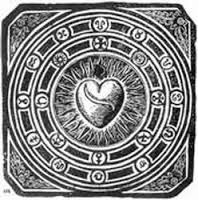In the biblical story Elisha then threw a stick into the Jordan and brought to the surface the axe-head his disciple had lost (cf. 2 Kings 6:6); that is to say, he revealed a thought that his disciple believed to be hidden deep within him and he exposed it to the view of those present. Here the Jordan signifies speaking about repentance, for it was in the Jordan that John performed the baptism of repentance. Now if someone does not speak accurately about repentance, but makes his listeners despise it by failing to communicate its hidden power, he lets the axe-head fall into the Jordan. But then a stick—and this signifies the cross—brings the axe-head up from the depths to the surface. For prior to the cross the full meaning of repentance was hidden, and anyone who tried to say something about it could easily be convicted of speaking rashly and inadequately. After the Crucifixion, however, the meaning of repentance became clear to all, for it had been revealed at the appointed time through the wood of the cross.
St. Neilos the Ascetic
I, Ascetic Discourse
